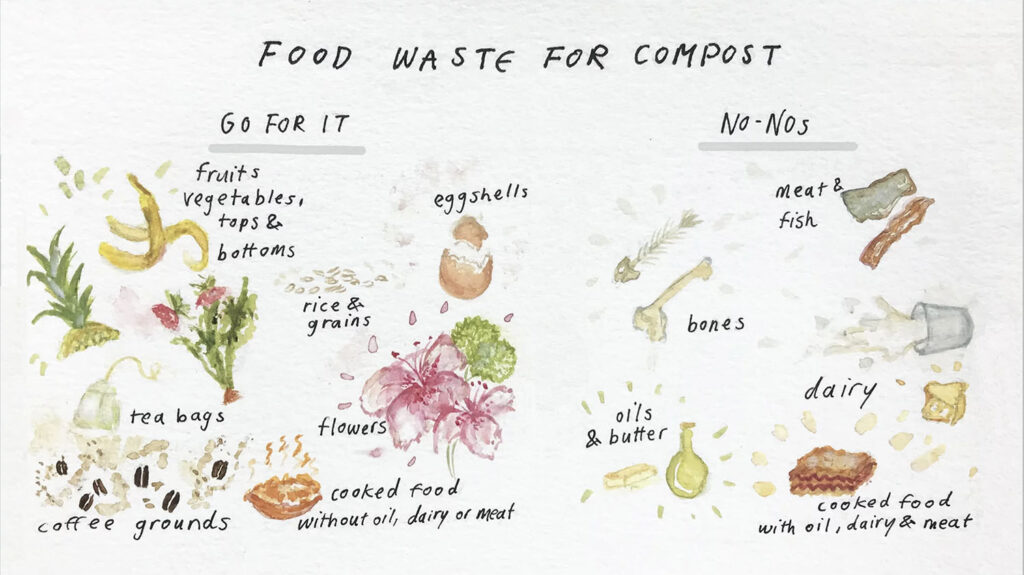By Alliance Communications Coordinator Amy Durr
I want to be a composter. But I’m a recovering perfectionist with limited resources to purchase a fancy composting system. I have remained overwhelmed for many years by the exceedingly large number of rules for composting, including the problematic brown-to-green ratio and the proper level of moisture. In addition, I fear an unusable black slimy pit, full of plant pests and unimaginable creatures. I have trouble touching slugs and my mind will go no further than that.
But experts say composting is forgiving, adjustable, and joy-provoking. It wants to be our friend. “Most people overthink composting,” Amy Landers, who runs Gardens That Matter, blithely tells the Washington Post. Could she be right? NPR boldly shares 5 seemingly easy steps to composting: select your food scraps; store those food scraps; choose a place to make your compost; make the compost mix; and aerate and wait. And there are some simple ways to compost your leaves.
If you have Compost Anxiety™ like me, you began hyperventilating at #1. Put the wrong food in your pile and your compost will DIE, and it might eat your pets. WaPo shares Landers’ advice to play it safe when you’re first composting by not including pet waste or some of the things that experts might include, like oils, meats, orange peels, dairy and bones. Many prohibitions are not hard and fast rules. ‘A lot of the composting guidelines are built for the safest, lowest-risk situation,’ she says. ‘Your compost bin should never keep you up at night,’” Landers tells WaPo.

Getting back to NPR and the thousands of other sites which tell us composting isn’t as famously impenetrable as James Joyce’s Finnegans Wake, I have a message for you and me. We can do it. Here’s a brief summary of NPR’s guide to composting:
- Select your food scraps – Helpful chart above
- Store those food scraps – Under the sink, in the freezer, in a specially crafted container or not
- Choose a place to make your compost – Purchase a composter, DIY one from wire mesh or pallets, start a pile in a corner of the yard or see if there’s a local community garden
- Make the compost mix – It really is layering — browns then greens, browns then greens, with adequate moisture
- Aerate and wait – Turning the compost every 7 to 10 days allows necessary air for the microbes and will speed things up
You will make mistakes as you go, and you will learn from them. Your compost may be good and then bad and then good again. You will get the hang of the green-brown mix. And you will stop contributing to the 35% of the total US food supply that ends up in the trash, according to ReFED, and the 8% of greenhouse gas emissions that come from wasted food, according to NPR.
The easiest fall composting
I think about composting a lot (climate guilt) and I just realized last week that composted leaves (AKA “leaf mold”) are essentially a less nutrient-dense form of compost. “The simplest way to compost is to leave your leaves in a pile in your yard. Leaf mold is a great soil amendment. It is essentially a soil conditioner that increases the water retention of soils. Leaf mold also improves soil structure and provides a fantastic habitat for soil life, including earthworms and beneficial bacteria,” according to The Spruce. Just pile your leaves and, well, leave them. Voilà!
I’m now inspired to compost and hope you will join me. Your plants and Mother Earth will love you. Please share your wisdom and experiences about composting: info@afors.org.

